Box blight began ravaging the box hedges at RHS Garden Wisley from around 2006, and we began to tackle it through careful pruning, with some spraying. It felt arduous, and the results were not always satisfactory. It felt wrong and too shocking to strip the garden of its small hedges, so we limped on.
Jump to
Then, the box tree moth arrived in noticeable numbers in the garden from around 2014, and the speed of defoliation from the feeding caterpillars was astounding. At the RHS, we were inundated with members asking what they could do to save their box. We found ourselves at a crossroads.

It was evident there was no panacea that we could rush out and buy, and it seemed we needed more sensible alternatives to spraying or picking off caterpillars. The much-discussed Ilex crenata seemed to be the solution to everyone’s gardening prayers. But in the Wisley climate (hot and dry in the summer, on sandy soil) it appeared to die slowly, going uncontrollably
yellow across its foliage.
I felt we needed to start looking at the ‘clippability’ of other small-leaved evergreen shrubs and conifers. Box had always taken close clipping, seemingly completely tolerant to it. What else could manage such treatment? The Wisley team came up with a wonderful design to carry out an informal trial in the Walled Garden East, where small hedges, pyramids and taller hedges could be made up of different genera and cultivars, with the understanding that as time progressed, we would start to see results that we could share with members and visitors.
PLANT PROFILE
What Evergreen shrubs and conifers with mostly small leaves and a compact habit (when clipped) with potential to form hedges and topiary shapes, without crippling pest and disease associations.
Origins Many of the shrubs featured, which were trialled at Wisley are native to New Zealand, and have typically small leaves.
Season Year-round interest, though colourful juvenile foliage during the growing season adds extra appeal to some cultivars, while others take on a new foliage colour during colder months.
Conditions Generally full sun in well-drained soil, although podocarpus and rhododendron will tolerate partial shade.
Hardiness Mostly hardy in the UK, but pittosporum will suffer below -10°C.
The two main considerations that have become very important are the plants’ ability to cope with close clipping and their levels of vigour. Those wanting a crisp finish, for example, will find a plant needing three clips a year tiresome.
Some early inclusions have been edited out: the wonderful Ugni molinae ‘Butterball’ was too tender for the cold frost pocket that is Wisley, and some of the small-leaved ceanothus couldn’t cope with the level of clipping forced upon them. Other shrubs simply had too much stamina, the most unsuited being Elaeagnus x submacrophylla ‘Compacta’, which managed to throw out extension shoots some 30-60cm high just a fortnight after clipping.
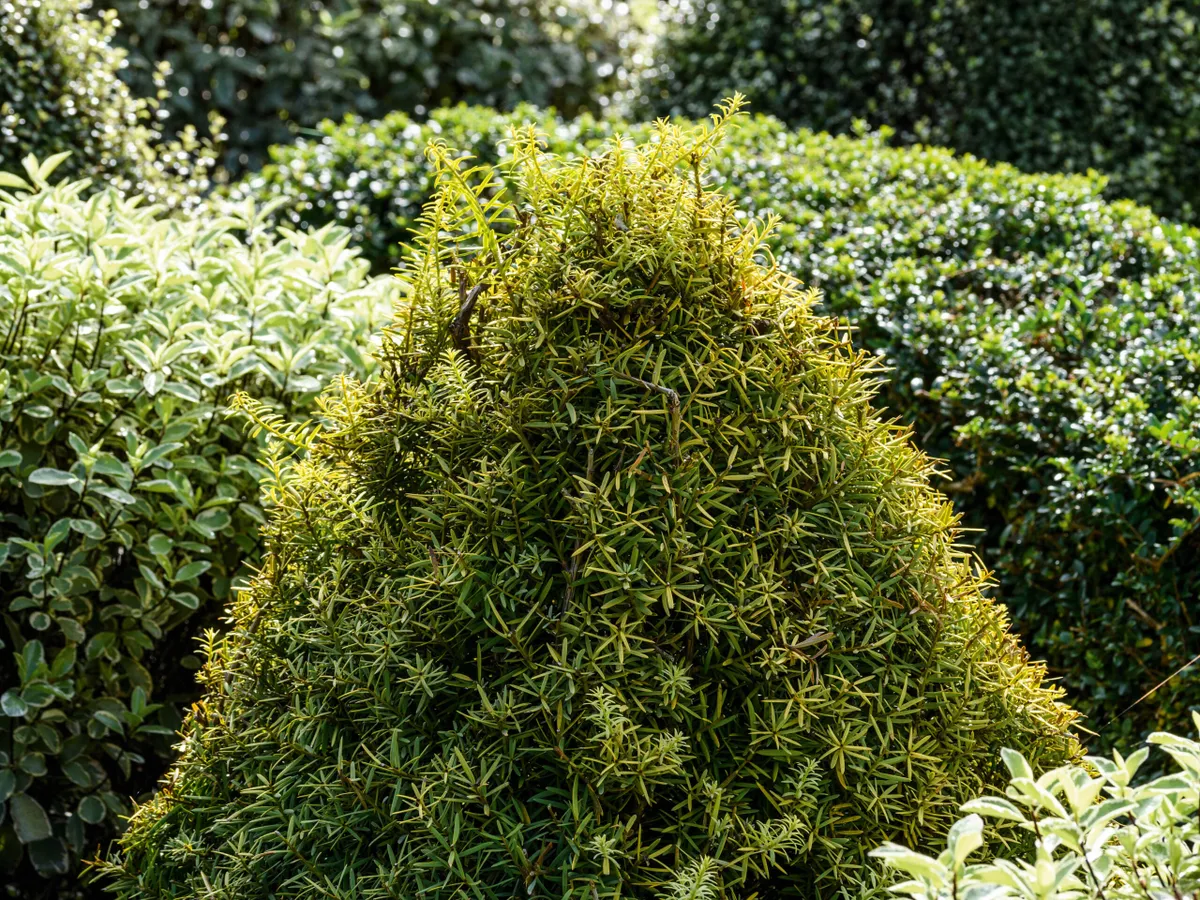
Of course, a range of alternatives brings about different colours, textures and forms. A fascinating debate then ensues – is it really a box alternative if it doesn’t look the same as box? But in a gloomy, north-facing garden, surely trading dull, green box for something with a white, variegated leaf is positive? I’ve seen spheres of the white-speckled Pittosporum tenuifolium ‘Irene Paterson’ used to great effect in a small London garden with an emphasis on blues and silvers. Perhaps the long-held snobbery around plants with coloured and variegated leaves will start to subside if their qualities for other garden uses come into play.
If you are wondering whether Wisley is now bare of box, we have one survivor, and that is Buxus sempervirens ‘Bowles’s Blue’; its larger, slightly puckered, tough, glaucous leaves appear to be making a last stand against both the blight and the caterpillar. It doesn’t clip to a tight hedge, but it is the only box hedge we now showcase.
Watch a clip of Matthew's hedging choices at RHS Wisley
The best alternatives to box
Many of these alternatives to box will be familiar, and few require special or unusual treatment. The greatest challenge is finding plants in sufficient quantity. It is fair to say that evergreen shrubs have been out of fashion for some years, and many retailers do not hold large stocks of small-leaved podocarps, for example. Thankfully, many of them, such as Corokia, Pittosporum, Podocarpus and Taxus, are easy to multiply at home by semi-ripe cuttings.
Planting guidance is the same as for any standard shrub or tree: plant in autumn when the ground is warm, with some moisture, and keep plants watered during dry periods for the first two summers. Start clipping in late summer as soon as the plants have reached the desired size and shape, with up to two or three clips depending on the quality of the soil, which is the determining factor for the rate at which many shrubs grow. Pinching out the growing points encourages plants to branch and creates better hedges or topiary shapes.
Read our expert advice on growing evergreen shrubs.
Podocarpus nivalis
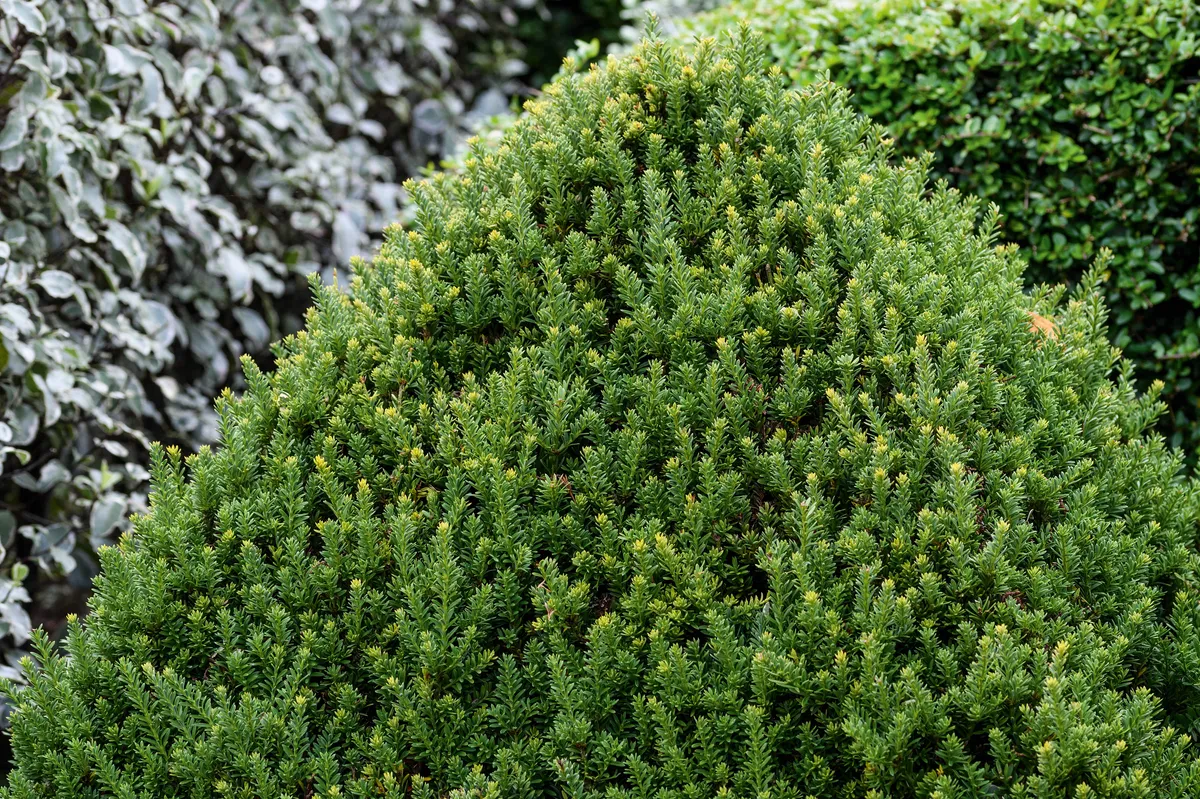
For the purist wishing to replace the box-like, matt-green, small leaves with something similar, the superb Podocarpus nivalis could well save the day. It isn’t too fast growing, is easy to propagate, and can regenerate from old wood. It can also cope with full sun to part shade. It is a versatile and reliable conifer that has similar red fruits to yew. It can be readily grown from semi-ripe cuttings, and its plain green foliage is a great foil for other plants. Only requires one clip a year to maintain a tight appearance. 2.5m x 2.5m. RHS H5.
Podocarpus ‘Chocolate Box’

As a fan of coloured foliage, I also enjoy some of the podocarp cultivars, such as Podocarpus ‘Chocolate Box’, which flushes a magnificent bronze in autumn. It is similar to Podocarpus nivalis except the foliage is a darker green in summer, flushing a deep chocolate bronze during the colder months. Requires one clip a year to maintain a tight appearance. 2.5m x 2.5m.
Podocarpus totara ‘Aureus’

Similar to Podocarpus nivalis but with larger leaves and a more open habit that becomes denser with repeat clipping. Flushes mustard-yellow in the colder months. Requires one clip a year to maintain a tight appearance. 12m x 4m. RHS H5.
Pittosporum tenuifolium ‘Oliver Twist’

One of the best cultivars for small foliage, Pittosporum tenuifolium ‘Oliver Twist’ has a delicate, yellow variegation to the leaf that is less obvious in the fresh new growth. The slender, black stems are easy to clip. Requires three clips each summer on fertile soil to maintain a tight appearance. 4m x 2.5m. RHS H4.
Berberis x stenophylla ‘Corallina Compacta’

An evergreen berberis with a flash of short-lived, orange flowers in early summer. The stems and foliage are slightly spiny, but it only needs one clip in summer to keep a tight appearance. 50cm x 50cm. AGM. RHS H5, USDA 6a-9b.
Rhododendron Bloombux (= ‘Microhirs3’)
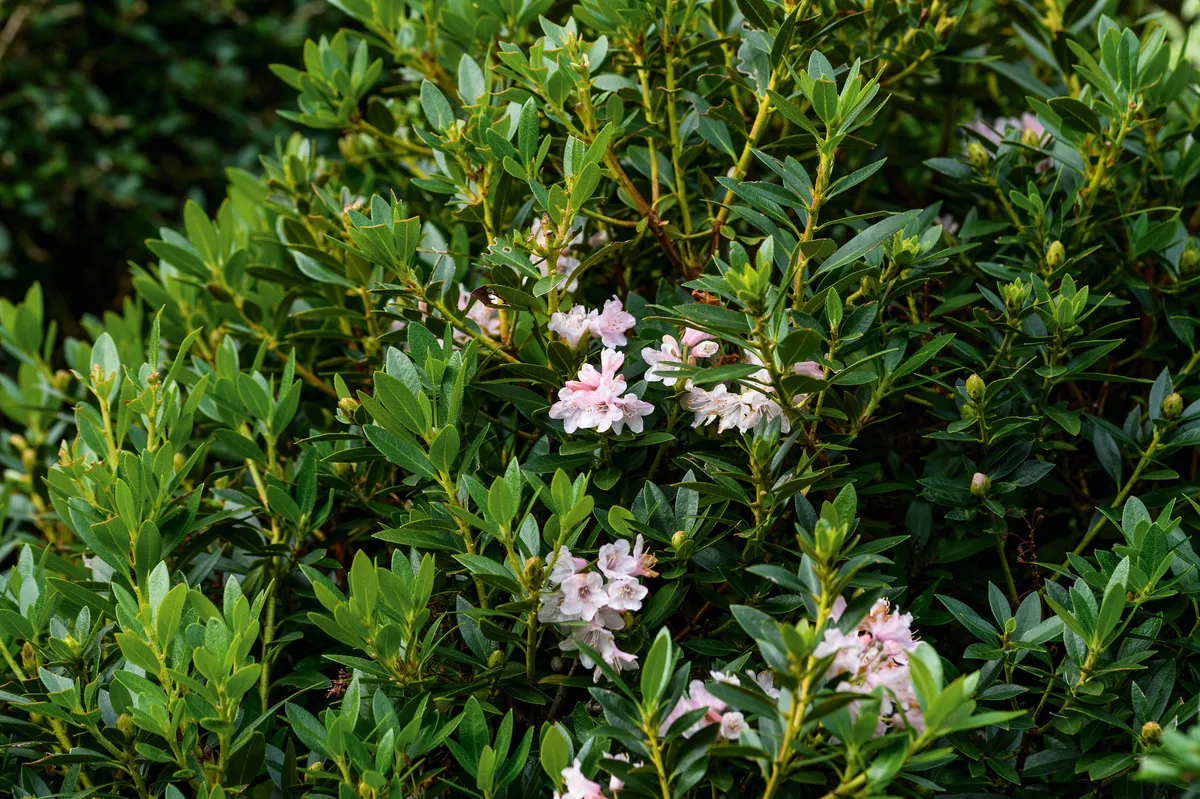
A relative newcomer, with attractive, dark-green foliage and pale-pink flowers in early summer. Requires two clips in summer on fertile soil to maintain a tight appearance. I imagined the Wisley conditions would be far too hot and dry for it, but it has gone on to triumph.1m x 1m. RHS H5.
Taxus baccata ‘Repandens’
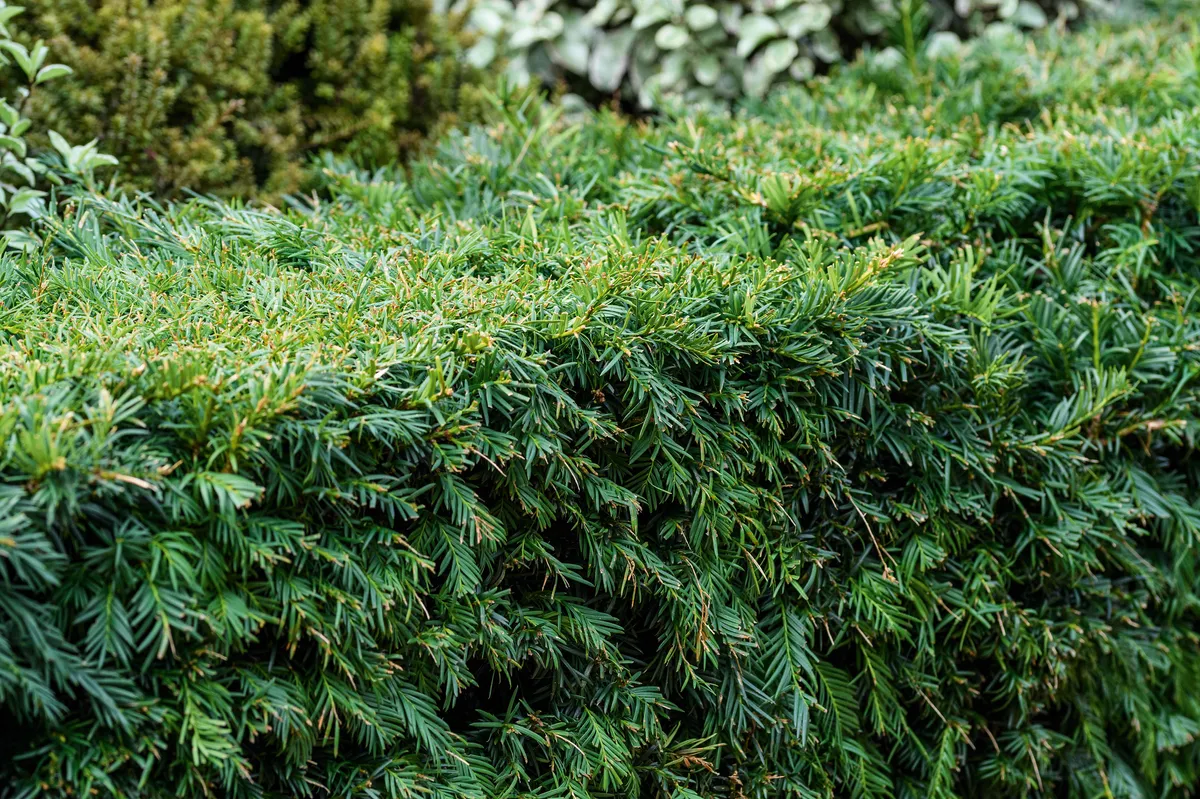
An old cultivar, sometimes seen in old rock gardens where plants are wider than tall. Tolerant of both sun and shade. It is usefully not too vigorous but takes a few years to fully ‘fill out’ given its slow-growing nature. Only requires one clip a year to maintain a tight appearance the ‘old school’ yew cultivar Taxus baccata ‘Repandens’ is less vigorous and tends to grow more prostrate, and takes to close clipping on a small scale beautifully well. Given that we had confidence it would be reliable, we used it to hedge the entire display. 50cm x 4m. AGM. RHS H7.
Taxus baccata ‘Renke’s Kleiner Grüner’

A new introduction from a chance seedling, this dense, feathery, dwarf yew is a good stand-in for box. The tips of the new growth have a coppery tone. Needs one clip a year to maintain a tight appearance. 2.5m x 2.5m.
Corokia x virgata ‘Silver Ghost’
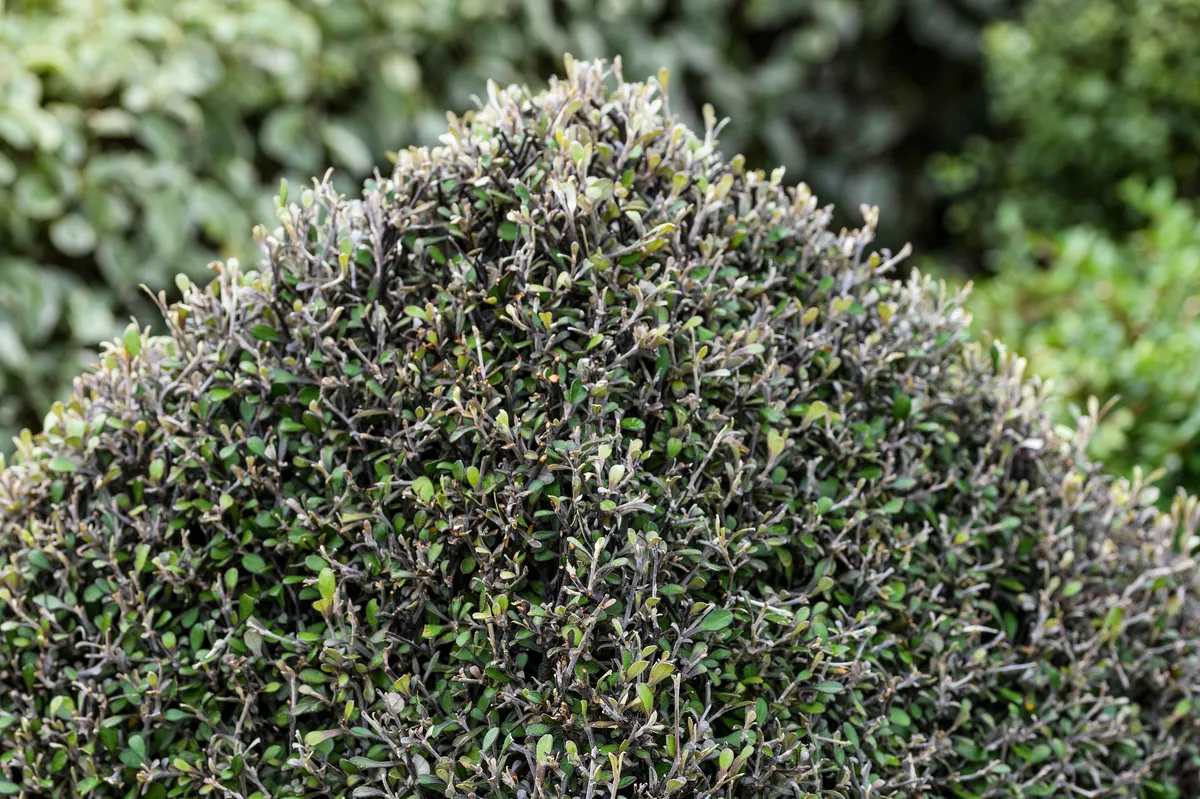
A cultivar that’s a personal favourite, with dense, tangled, almost zig-zag like, black stems with silvery-grey leaves. Best in full sun and tolerant of maritime exposure. Requires two clips a year to maintain a tight appearance. 2m x 1m.
Ligustrum sinense ‘Sunshine’
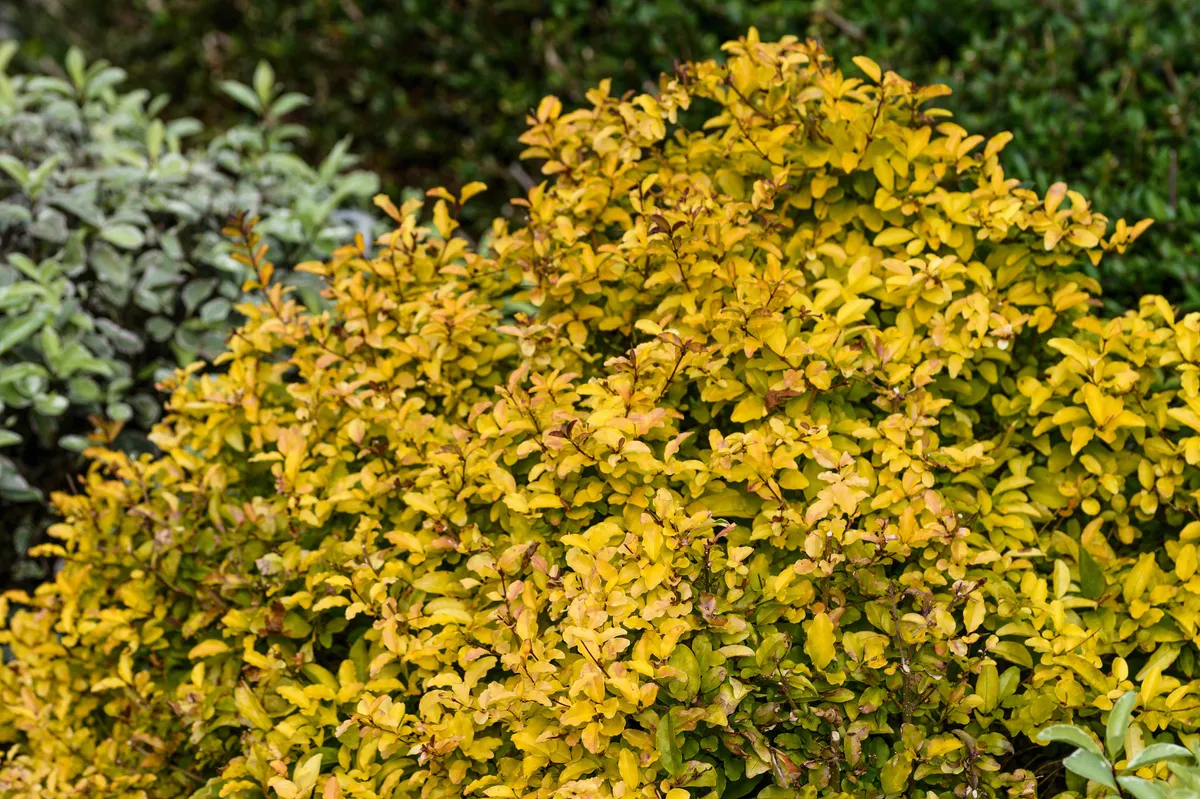
For a splash of warm orangey-gold, this Chinese privet has a small, delicate leaf, evergreen in all but the coldest of winters. Requires two clips a year to maintain a tight appearance. 1.5m x 1.5m. RHS H5.
Cotoneaster conspicuus ‘Decorus’
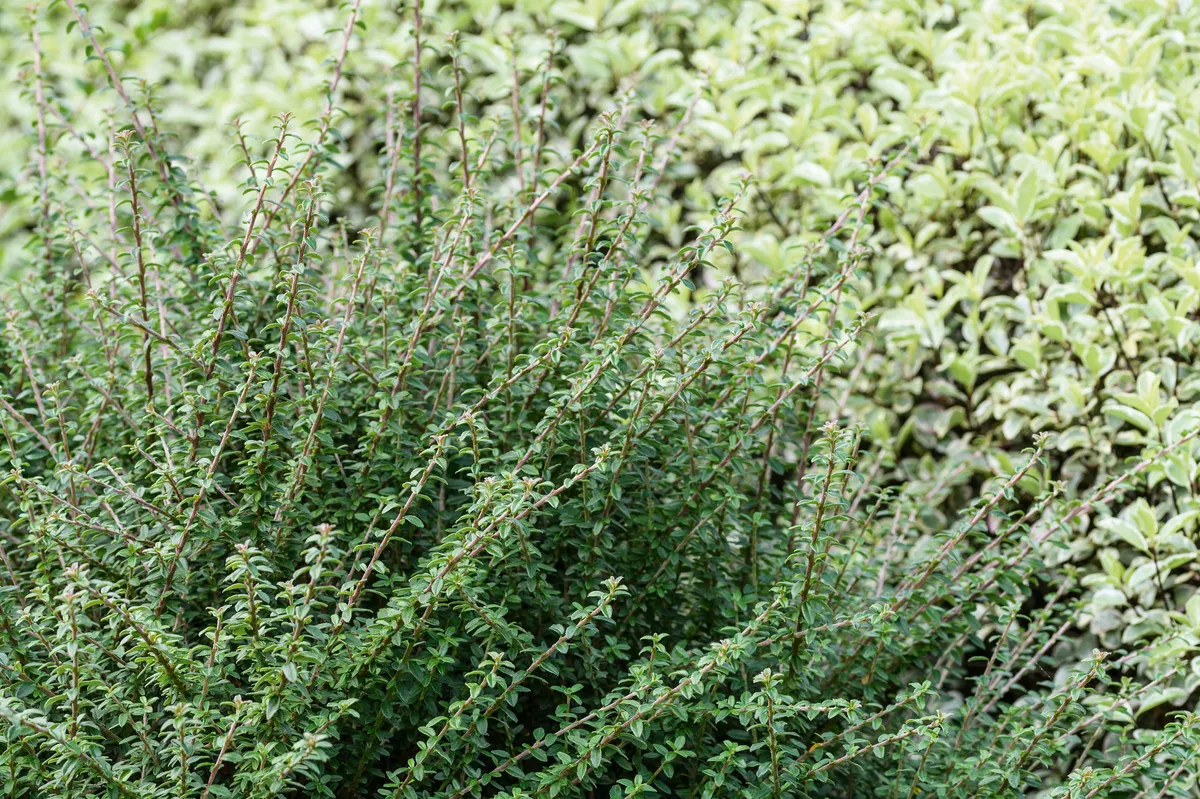
Can easily be cut back into old wood where it will duly regenerate. White flowers attract pollinators in spring; red fruits follow in autumn. Requires two clips a year to maintain a tight appearance. 2.5m x 4m. AGM. RHS H6.
Phillyrea latifolia ‘Les Barres’
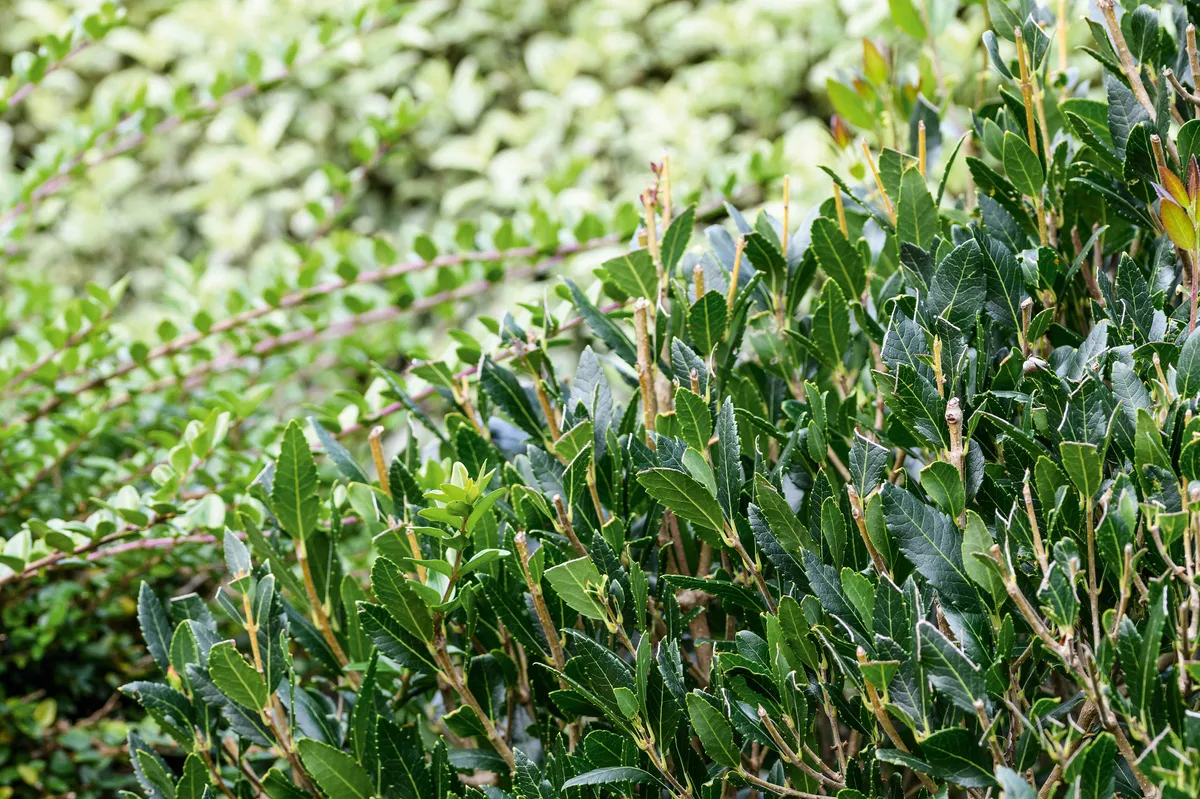
Phillyrea make wonderful, versatile garden plants and this cultivar has attractive, rounded, deep-green, glossy leaves. Best grown in full sun with good drainage. Requires two clips a year to maintain a tight appearance. 8m x 8m.
Corokia x virgata ‘Frosted Chocolate’
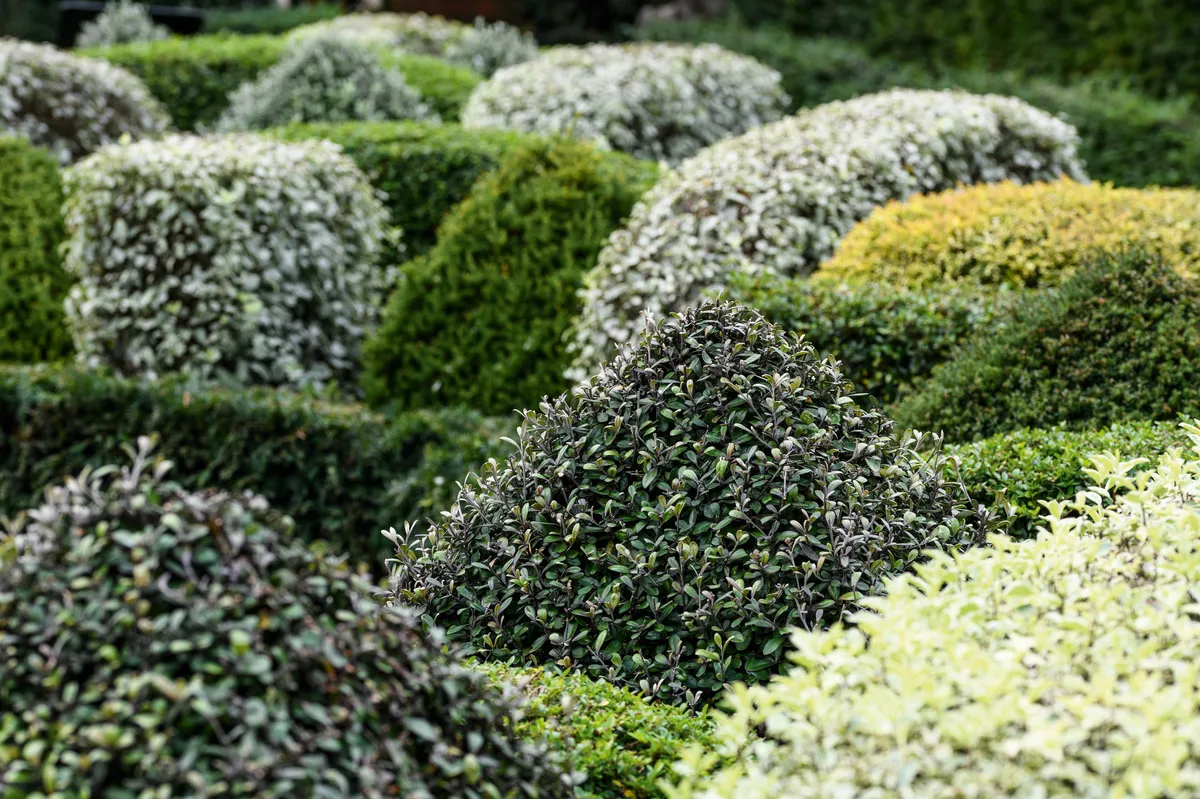
A beautiful cultivar, with frosty-looking, bronze leaves that are at their best in cold weather. Small, yellow flowers in early summer can be followed by small, orange berries. Needs two clips each summer on fertile soil to maintain a tight appearance. 1.5m x 1.5m. RHS H4.
Here's a box caterpillar treatment